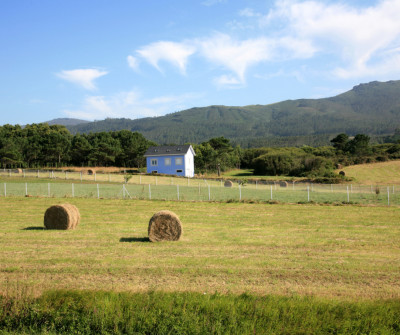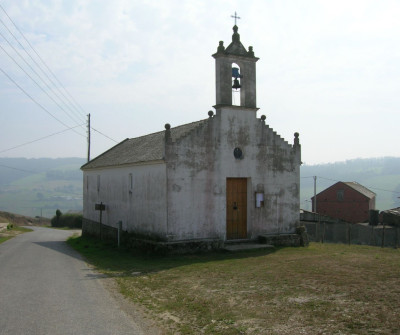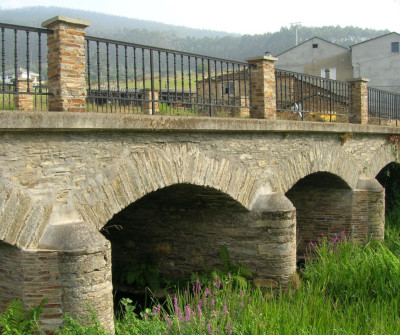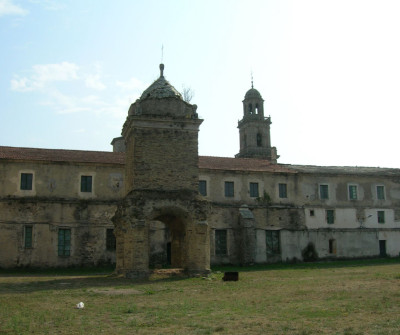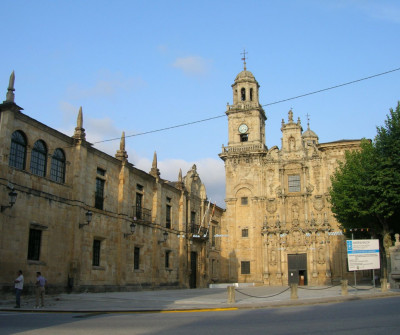After leaving Ribadeo from the Calle San Lázaro, you will reach a football pitch on the main road. You have to go towards the cemetery to go up to the neighbourhood of Pastoriza de Obe. From there you will already see the road signs to Vilela. In Vilar, you have to take a forest track, but if it is raining you should avoid it and get to A Ponte de Arante along the LU-133.
READ MOREThe Camino goes through a wood and into the municipality of Barreiros; from up there you can see the grazing fields and cattle, in a small valley traversed by the River Porto Bragán, where you will find the village of Vilamartín Pequeno and, on the other slope, Vilamartín Grande. Pilgrims have to cross the river and climb a steep stretch leading to Vilamartín Grande, to the left of the Capilla del Carmen.
If you follow the Camino, before descending towards Gondán, you may enjoy great views from the hilltop of Vilamartín Grande, a sort of viewpoint from where you can see the entire valley of Cabarcos, including San Xulián and San Xusto. In Gondán (S. Xulián de Cabarcos) you will find a small chapel honouring the Virgen del Pilar and, just beside it, the fountain of Cimadevilla, where pilgrims usually stop to quench their thirst.
You continue descending towards the area of S. Xusto de Cabarcos, crossing the River Puxigo. You then leave the tar road and take a path to the Church. There you will see the cruceiro (stone cross) where the Chapel of Buen Suceso used to be until it was destroyed in 1984. You continue down to O Corveiro and from there onwards you will see plenty of Camino signs. After a short but steep climb, you will cross the Ponte da Pedra, a medieval bridge, to enter Vilanova de Lourenzá, with the chapel of Santa Cruz just by the football pitch. Lourenzá is famous for its “faba de Lourenzá”, a kind of bean.
Tips from our postmen and women
What to do and see in Lourenza?

In Lourenzá, you must not miss the 10th-century monastery with its 6th-century marble tomb, a unique piece. The most remarkable feature is its Baroque façade, designed by the same architect who designed the Obradoiro façade in Santiago, Compostela-born architect Fernando Casas Novoa.
You can visit the Fortaleza de Tovar in San Tomé, a fortress open from April to October from 10 to 13 and from 16 to 20 hours and from November to March from 10 to 14, or go for a walk along the Paseo Fluvial and the recreation area of A Cazolga (Lourenzá)”.


 Filter
Filter